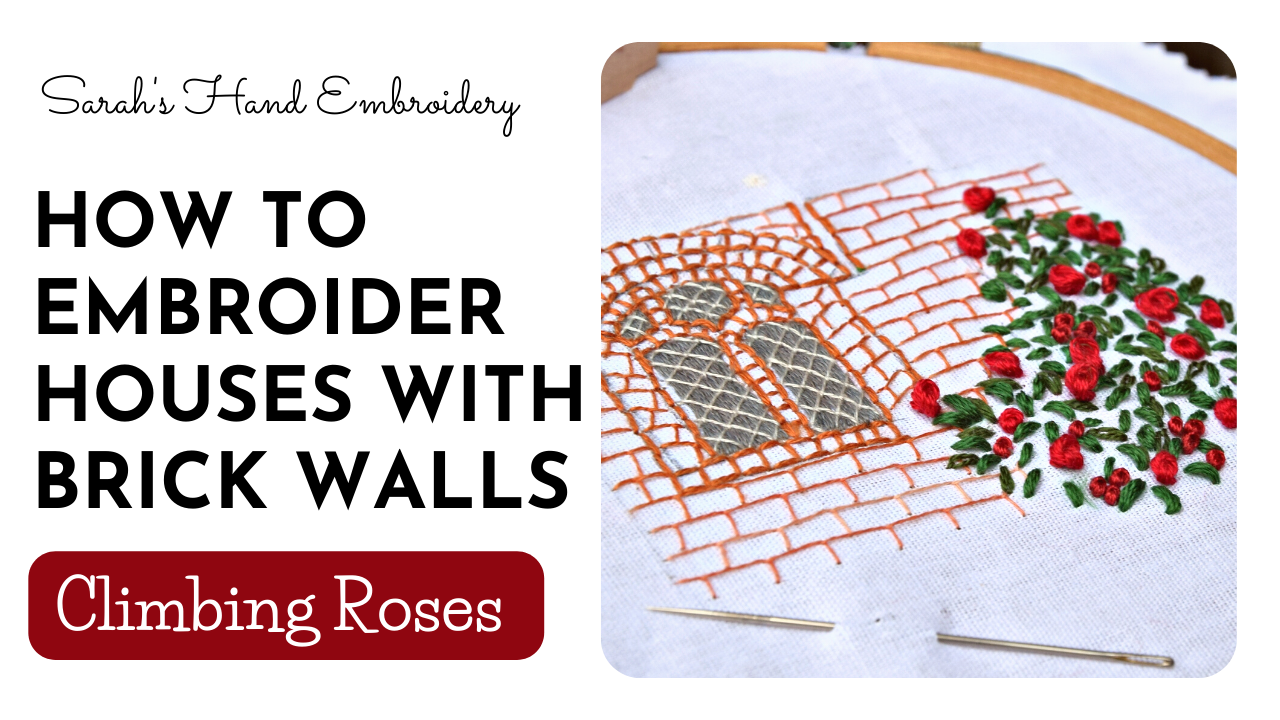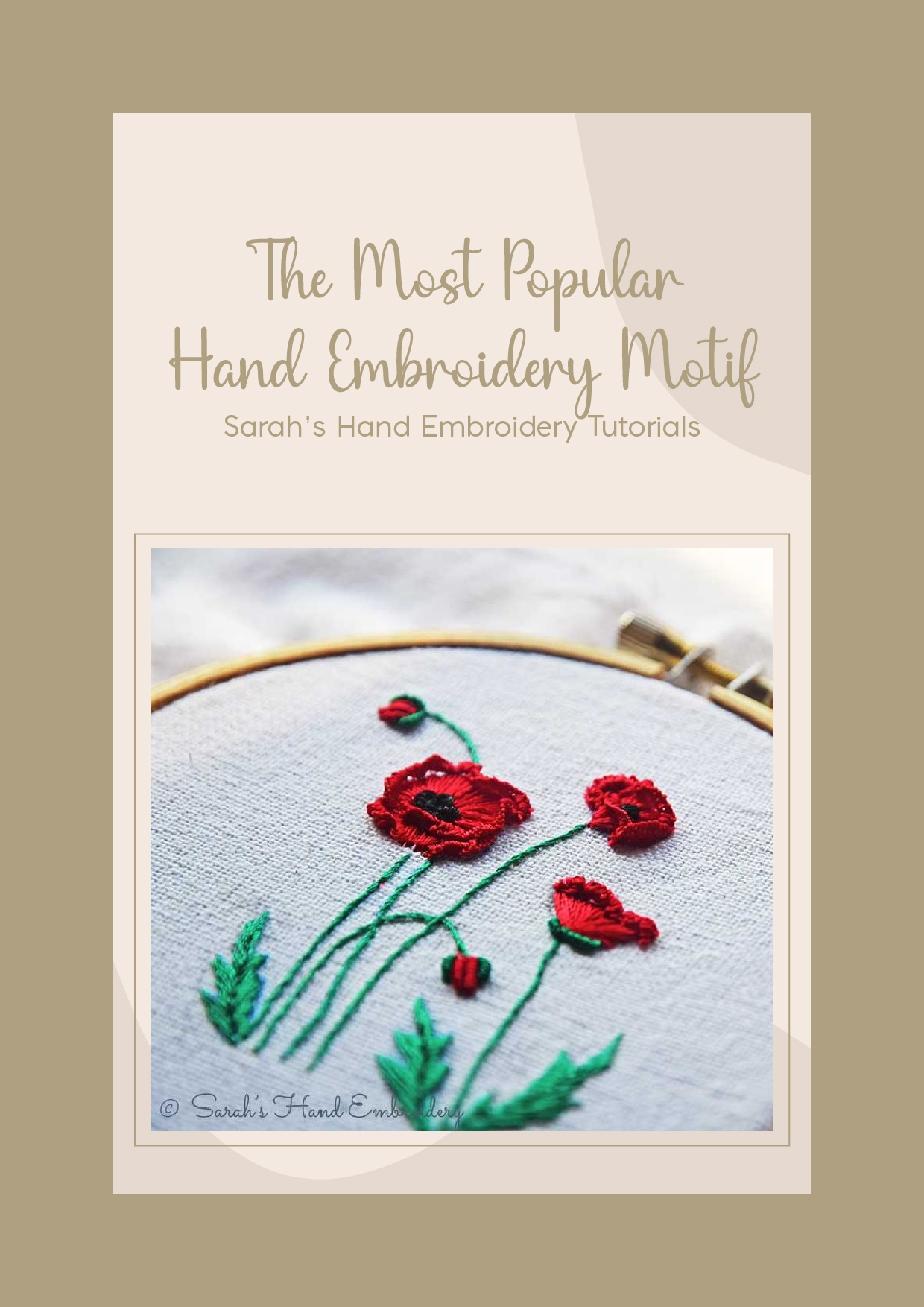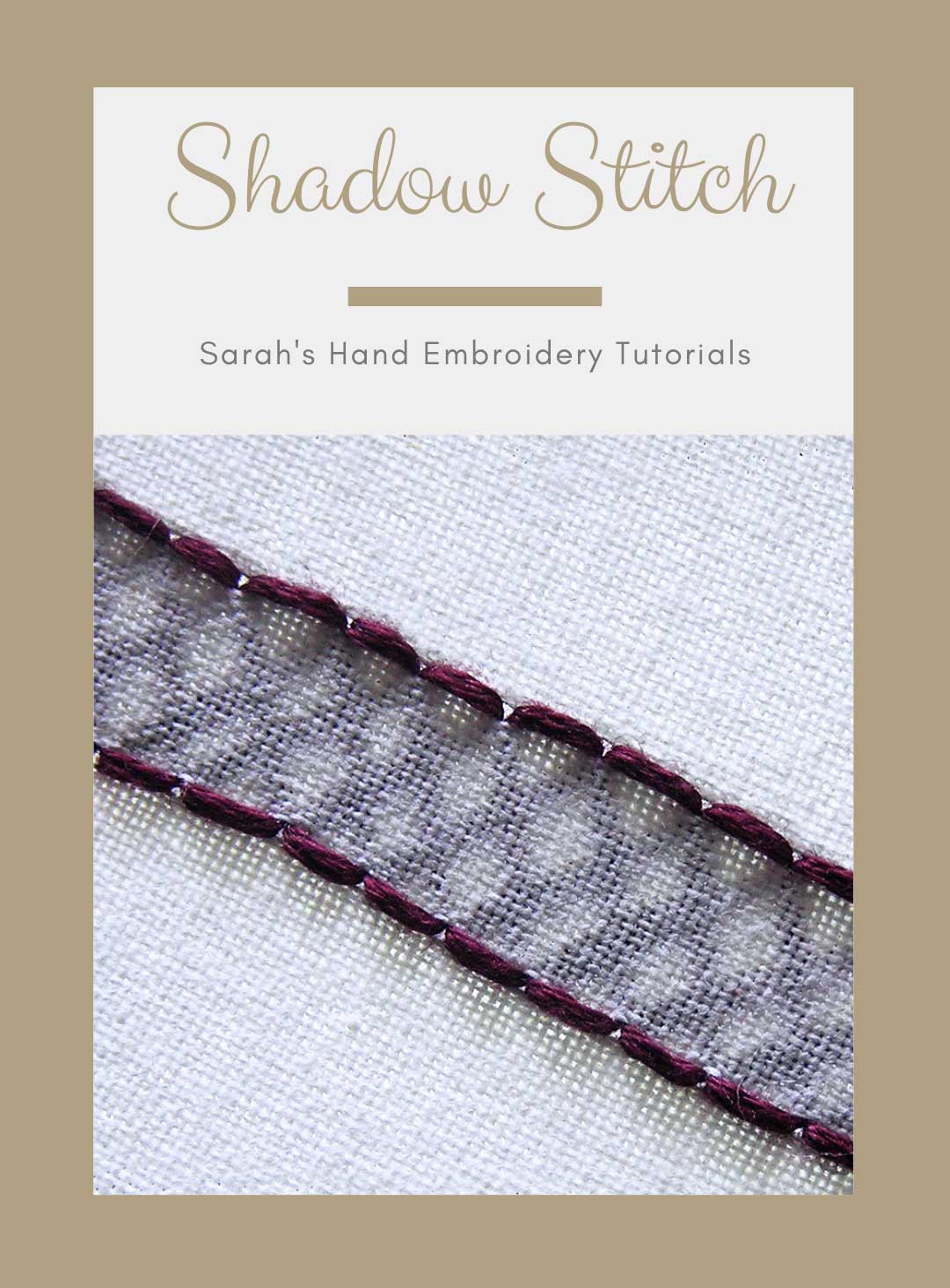Also known as: chicken scratch embroidery, depression lace, snowflaking, amish embroidery, gingham lace, tic tac toe embroidery, hoover lace
 |
| embroidery sample: chicken scratch |
About chicken scratch
Chicken scratch embroidery is a very simple form of embroidery done, traditionally, over gingham fabric. Gingham fabric is a checkered fabric, making the counting of stitch easy. This infusion of a few stitches over such a fabric gives a very sophisticated look. At the first go, it seems like a lot of time and energy was spent in bringing about such an ‘appliqued lace’ effect.
This form of embroidery is used to decorate different household items like pillows, cushions, aprons, jar lids, table cloths and mats, and even bookmarks. The cloth with smaller checks (8 squares per inch) is used for smaller projects like bookmarks and pin cushions. The bigger squares (4 squares to an inch) is used for bigger projects like table cloths.
History
This embroidery is believed to have originated in America during the early years when the new settlers came in. This information, however, remains unclear. It is said that as the settlers moved to newer places, the embroidery also got newer names. An interesting fact is that during the Depression, ladies made gowns from gingham fabric and declared their stitchery as hoover lace.
With so many names that this embroidery is known with, it is also mistaken with Teneriffe Lace, which is a bit more complicated form of embroidery.
Chicken scratch today
These days, chicken scratch is taken up with new interest amongst the needle enthusiasts. A lot of experimenting with the colour of threads used, the fabric, and even the stitches is happening, probably giving way to a new kind of chicken scratch embroidery altogether, than the traditional one.
Gingham fabric is replaced with Aida, or even weave fabric. The colour of thread is not chosen to give only a lacy effect, but a different one. Even the stitches used have expanded.
Stitches used
Traditionally the following stitches are used on gingham fabric. But, these days, it is not confined to these alone.
1. Running stitch
2. Cross stitch
3. Double cross stitch
4. Woven oval
5. Woven circle
Transferring designs
The designs are first marked on a graph sheet. Usually, each design would have its own key, decoding the type of stitch to be used. The design can then be directly stitched on to the gingham fabric, taking each square in the graph sheet as each square on the fabric.
Thread, fabric and stitch tips
A variety of looks can be created using a couple of stitches. Here are a few tips to keep in mind before beginning the lessons:
1. You can use a single colour of thread or many.
2. It is common to use light coloured thread over a darker fabric and vice versa.
3. When two colors of threads are used, one is usually white and the other is the darker than the darkest cell in the fabric.
4. Generally, six strands of cotton floss or Perle cotton #5 are used.
5. Be sure to follow the same sequence while doing double cross-stitch.
6. It is advised to stitch the outline of the motif patterns first, before filling the inside.
7. The general sequence of stitch to be followed is – cross-stitch and double cross stitch, running stitch, woven circle, and woven ovals. This, however, remains a matter of convenience.
8. All stitches are either done over the white cell or the darkest cell. The tinted cell (i.e. lightly coloured cell) is usually left alone, except for straight stitches to support woven circles or woven ovals.
Lessons
The lessons will give you an overview of how to do chicken scratch using the traditional gingham fabric and the above-mentioned stitches. When chance permits, I will demonstrate a few ‘new’ stitches over Aida fabric too.
Lesson 1: border design using white thread over gingham fabric
Lesson 2: heart motif using different coloured threads over gingham fabric
 Sarah has been researching and sharing hand embroidery lessons for over 17 years, making it accessible to everyone around the globe.
Sarah has been researching and sharing hand embroidery lessons for over 17 years, making it accessible to everyone around the globe.





Hello Sarah, I am new to your website and enjoying it immensely! I found your tutorials easy enough to follow and the photos that accompany it. But like everything else it takes practice. How do i approach it as a beginner? I am on a tight budget too. What would be the best project to start with? I have recently attended a new craft meeting near where we live and the lady showed us some samples of Chicken Scratching and I said I would like to learn in the New Year. I would like to get in some practice before then.
Thank you for a wonderfully illustrated website.
Sandra (Kilkenny, Rep of Ireland)
Hi Sandra,
Wonderful to hear from you.
If you are absolutely new, you can begin with some easy stitches from the straight stitch family. Chicken scratching will be easier if you practice these stitches. Since stitching in straight lines would be boring, I would suggest you just pick up an easy pattern or design (just the outline and not complicated). Practice the stitches over the outlines and enjoy the outcome!
Hope this helps! Let us know how your chicken scratch classes are coming out to be. 🙂
Can you please tell me where I can find a good quality 1/4 inch cotton gingham check fabric?
Hi sarah,
Thanks a ton for your website. For last few years I had completely put down my needles and hoop,,now again I am motivated to start something not done earlier.will surely share my work with u once I complete,
Thanks once again..
With all best wishes…
Fatema S B
Wonderful, Fatema. I hope you are still enjoying hand embroidery.😊
Hi Sarah,
Thank you so much for your web-site! I learned how to embroider as a young girl but have not done it since & now I want to start again! I love this chicken-scratch tutorial. Where can I find thick cotton gingham fabric. I’d like to make some
cute kitchen towels.
Wonderful, Priscilla. Do share your works here. Maybe you can try the hobby store or the thrift store to practice embroidery on.
Hi,
was browsing for kasuti designs and came upon your blog. completely forgot myself as I started reading about chicken scratch. It seems so interesting to work with Gingham fabric and so simple too. The designs look very beautiful. I am so excited that I cant wait to try this. My brain is already buzzing with the different things I can use this embroidery on. Thanks so much for sharing this great skill.
Could you please tell me where I can get patterns for chicken scratch.
Thanks again.
Best regards from the British Virgin Islands
Hi Bhanu,
Nice to know about your interest in chicken scratch. 🙂
You can search online for patterns.
Hi! I just wanna thank you for this lessons. I love your embroidery tutorials.
One more thing the link on Lesson 2: heart motif using different colored threads over gingham fabric, send me to Lesson 1.
Please let me know what happen.
Thank you again.
Greetings from Peru.
Hi Stephanie,
It is fixed. Thanks for mentioning it. 🙂
Sorry for the late response…had been in travels.
One more thing to thank for,my mom in law knows this all..but she always try to hide it from me but now i m happy, I can also learn everything ..jokes apart its too good..thanks
😀 Enjoy!
This is a lovely website and your articles inspire us to try new things.
I live in France and chicken scratch goes by the name of “la broderie Suisse” – Swiss embroidery. Apparently it developed in Switzerland during the 16th century after religious persecution of lace which was considered too sinful and debauched!!! So Swiss embroidery was a way round the strict religious Calvinist laws at that time.
This is a beautiful technique and can be chic and country both at the same time.
Dear Michele,
Thanks for this useful information and sharing it with us. 🙂
Hello,
Thanks so much for all the work you put into your website. I have learned a lot and will be trying the chicken scratch stitching today. Your work is beautiful!
Thanks again,
Laurie in California, USA
Hi Laurie,
Thanks. Please do share a picture of the chicken scratch work you will be working on. You can use the upload function given right below the comment box. It will be an inspiration to many others. 🙂
Hello Sarah,
I am the editor of a French crafty online magazine – Plumetis magazine
http://www.mespetitesmainsmagazine.net/plumetis-magazine
I would love to include your chicken scratch lesson in the next issue to be published around January 7.
Of course, the story will be credited and linked to your site.
I look forwards to hearing from you
Thank you for your classes
Merry Christmas et Joyeux Noël
Aurélie
Dear Aurélie,
It is an honor that you are asking our pages on chicken scratch lessons to be published in your online magazine. We will be happy to share it and see it published. 🙂
Thank you very much.
Joyeuses Fêtes
Sarah
Sarah, que lindo! Adorei esse bordado. Minha mãe fazia quando eu era pequena, me ensinou mas eu esqueci. Que bom encontrar seu tutorial! Obrigada
Bjs
🙂 Obrigado Bjs. Estou feliz que você encontrou alguma inspiração de nossas páginas.
i love your embroidery tutorials thank you for this lessons ,i used to do them as a child but i forgot how lol, but will start a learn again thanks to you
Thanks Nellie. It is a delight to know that our pages will help you to refresh what you learnt as a child. 🙂
Sarah,
I just love love love this part of your website where you explore different styles of embroidery from different eras. Don’t stop!
Margaret
Dear Margaret,
It is really nice to knw that you are enjoying our embroidery section. Yes, there is a whole lot of embroidery tutorials coming up, and hope you will like them. 🙂
I just recently came across your site… Believe me .. It is really wonderful, helpful and very very easy and simple to follow….. The pictures and your explanation about various stitches can make any beginner {by beginner…i really mean A Brand New Beginner} understand everything about embroidery / stitching….
I really loved your site… IT IS JUST THE BEST… KEEP UP THE GOOD WORK…. AND BIG THANKS FOR SHARING YOUR KNOWLEDGE …. 🙂
Dear Madheeha,
It is really wonderful to hear how easy you find our pages to follow and learn from. We feel good that this art is made interesting to you. 🙂
Best wishes!
Dear Sarah,
I am fan of your embroidery. The way you explained each and stitch is awesome. I want to ask one thing I wish to do embroidery on my kurta on the neck area. Could you please suggest me what stitch will be good.
Thanks
Bhawna
Dear Bhawna,
Thanks a lot. 🙂
I think you can do something with chain stitch and the chain stitch family for a nice neck pattern. You can check the ‘Zalakdozi’ tutorial on the right hand panel for some stitch ideas.
hi sara i love ur online tutorial classes it ll help evryone who wants to learn embroidery. thanks
Dear Suma,
Happy that you liked our pages. 🙂
Chicken scratch is a really cute and interesting form of embroidery. I can’t wait to try it! Thanks as always for your wonderful website. Margaret
🙂 Happy to hear that you will be trying out this embroidery, Margaret.
How can i embroider text, what stitch method should i start with. This will be my first embroidery so please help.
Dear Minic,
Text embroidering, as simple as it seems, could ask for a tutorial in itself.
Now, if you are a total beginner to stitching and embroidery, check the top right hand side panel of this website. You will find a lot of ‘families’ under the ‘basic stitches’ column. Start from the running stitch family, then moving on to the next ones. Use atleast 2 or 3 stitches from each family on your embroidery. This will not only help you to practice, but also to understand which stitch can be used best for certain styles of letters and words.
Note that this section still has a lot of stitches to be added, and so, not exhaustive.
Hope this information helps you in some way. Best wishes. 🙂